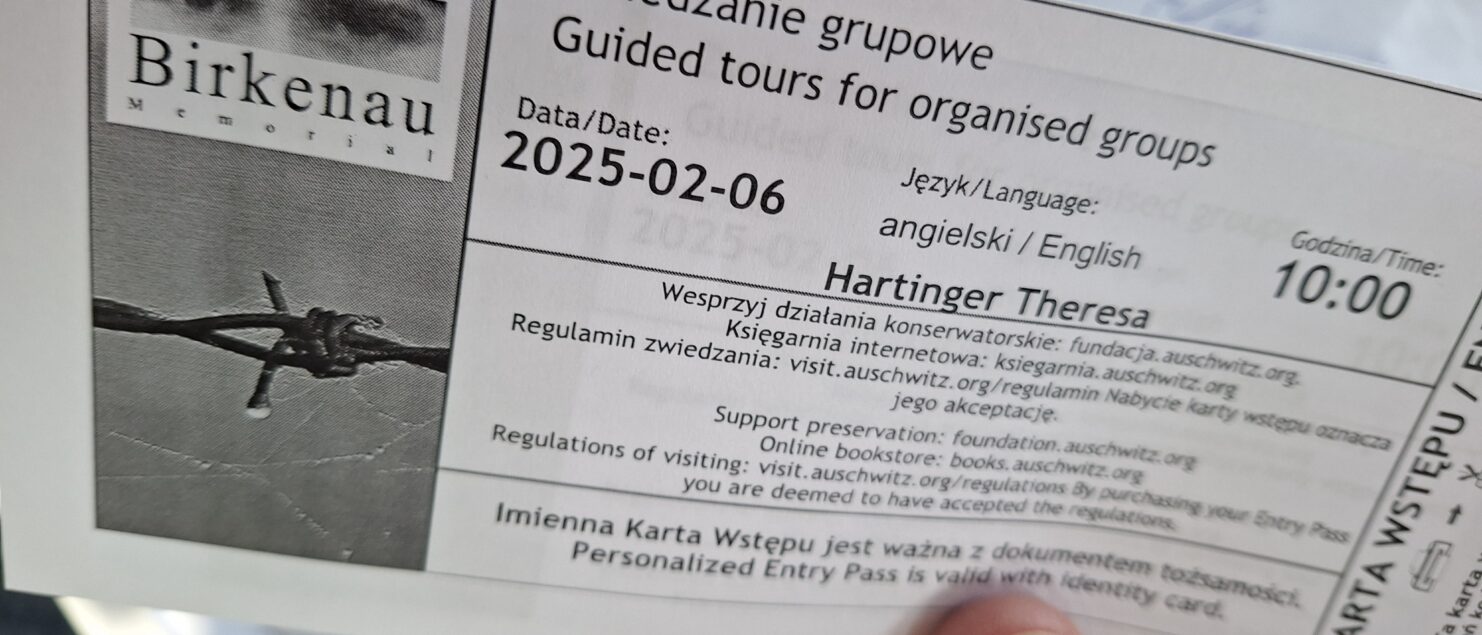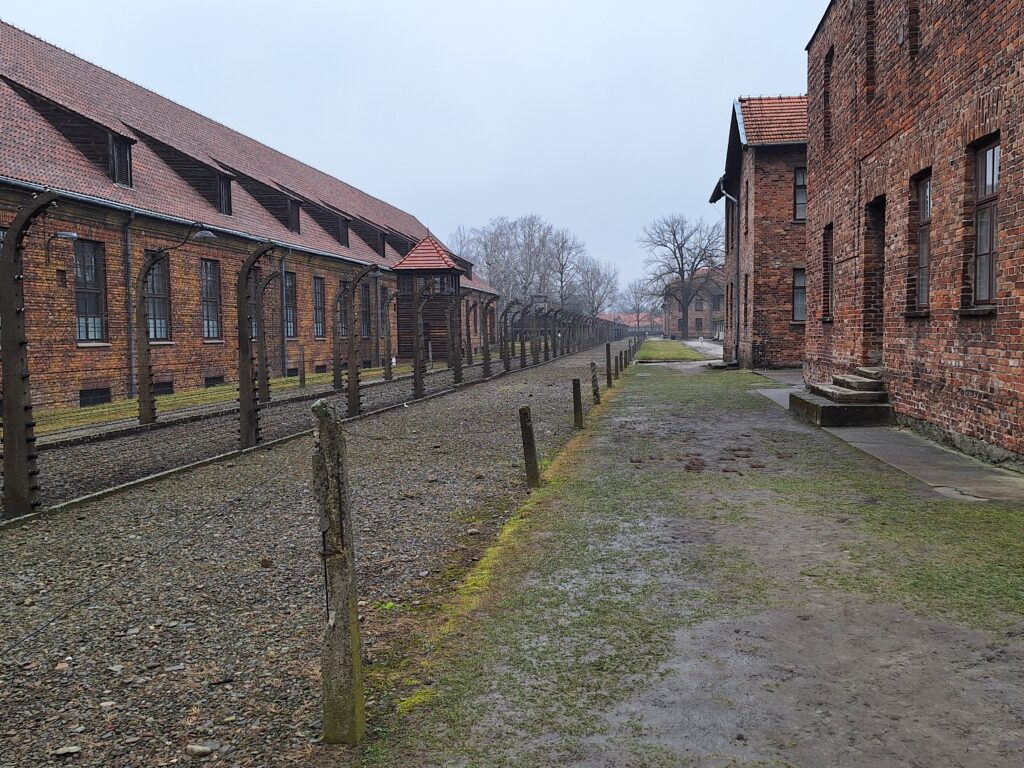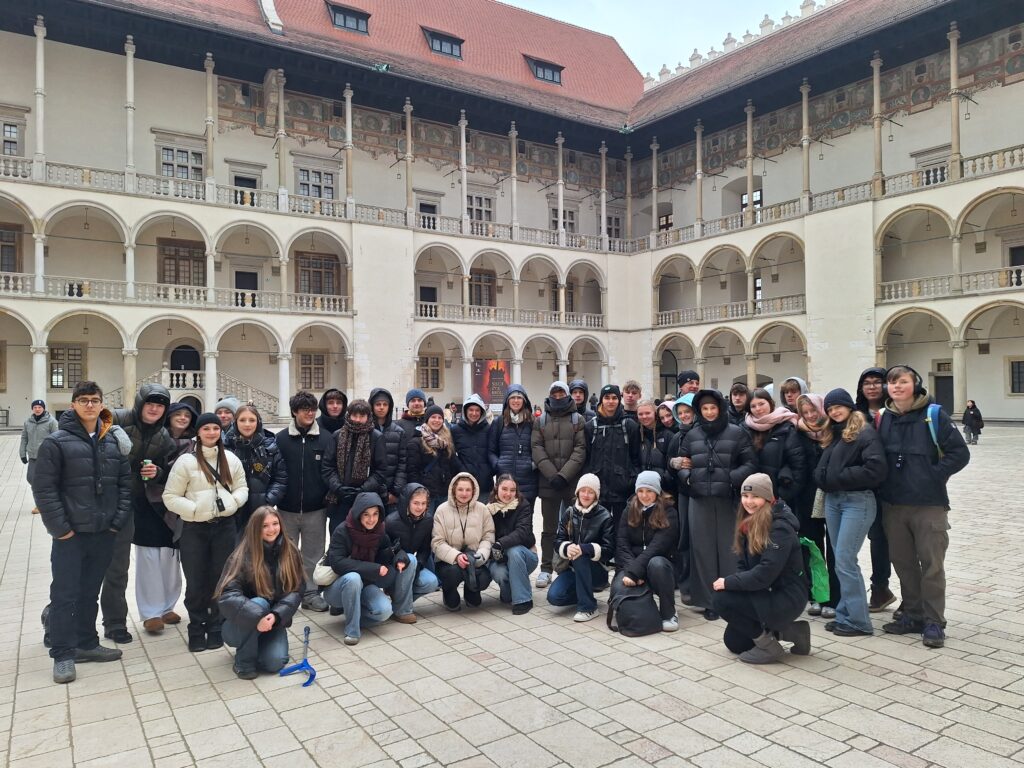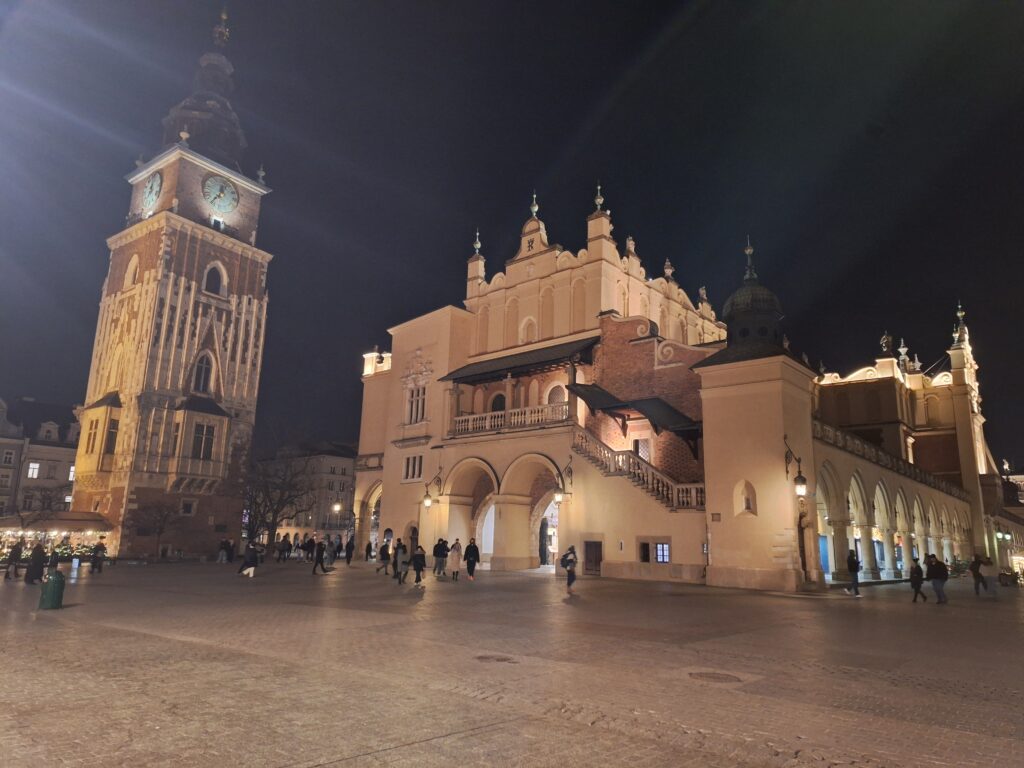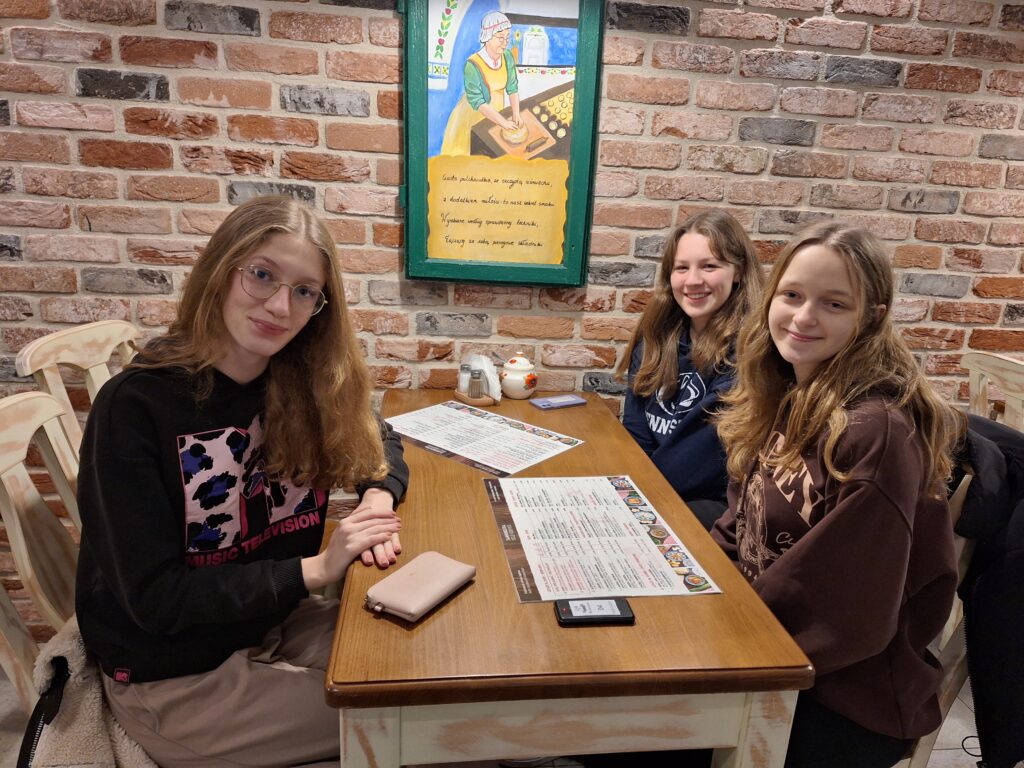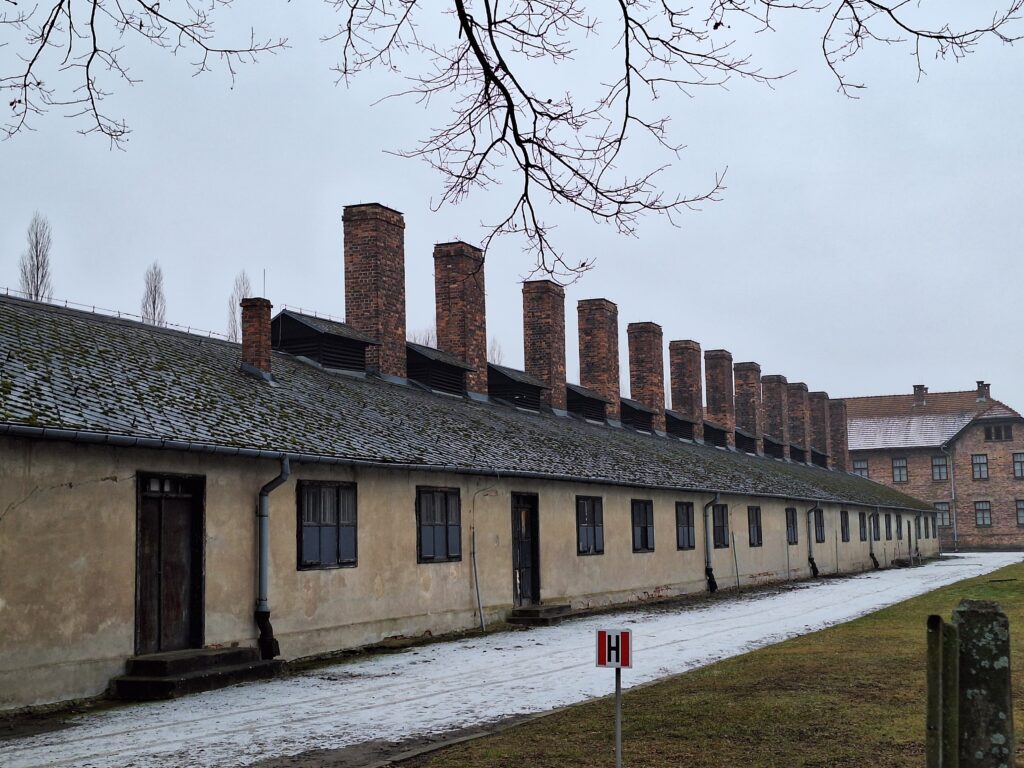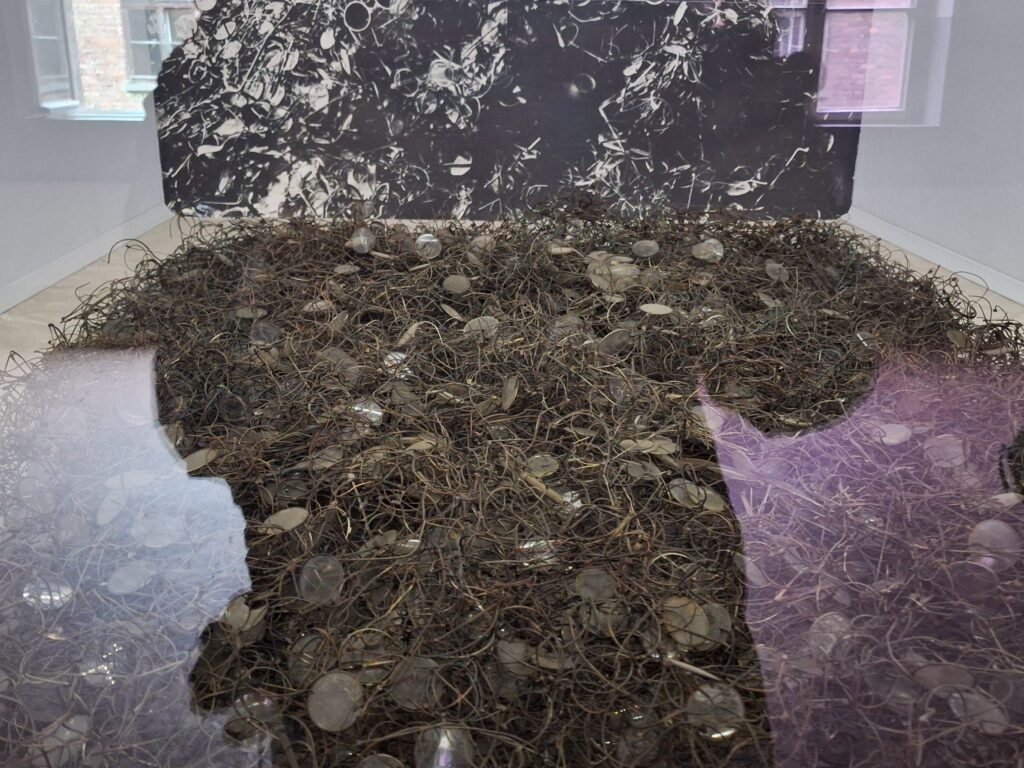Field Trip to Oświęcim
This quote by George Santayana can be found among the many memorials of the Second World War in Auschwitz.
Auschwitz is a place full of history, enabling people to remember and show their respect to the countless victims, who were brutally murdered there. The museum is divided in two different parts, Auschwitz 1 and Birkenau.
We visited Auschwitz 1 first, going through the famous “Arbeit macht frei” sign, an illusion for hope to the Jews. Inside the concentration camp there are different barns, all were used for different purposes, like a kitchen, dormitories and medical stations, nowadays some of these barns have been turned into museums. Our tour guide showed us inside, where we could see different pictures of early inmates, piles of pots, shoes and pieces of luggage which were taken away from the Jews once they entered the camp. It was very shocking seeing the number of objects belonging to thousands of victims. In a different room, where no pictures could be taken, there were huge heaps of hair which was shaven off from all the Jews heads to degrade them. The rooms that touched us students the most were two, the first one was the room dedicated to the innocent children who suffered the Holocaust, with pictures of them looking like they were about to cry, on the opposite wall there was a huge picture of a two year old baby which was all skin and bones. Seeing how weak and scared they looked helped us understand how cruel the Nazis truly were towards them and the brutal conditions they were living in.
The second room was different, there were no proofs of the horrible actions of the NS – officers, it was the opposite; videos and pictures of Jewish families laughing and playing, simply living normal lives were projected on the walls of the entire room. It was very moving seeing how they’re lives completely changes for the worse, because of something they had no control over.
The second part in Birkenau was not like Auschwitz 1, no museum was set up, in fact nothing was changed. There were the remaining barns, were hundreds of people slept in horrible conditions, the crematoriums remain, which the Nazis tried to destroy could also be seen. With a bit of a walk one group was able to see the place where the well-known picture showing many bodies burning in the woods was taken.
The second part included the train rail of the train bringing the Jews into the camp, unfortunately we couldn’t see the entrance, as it was still under a big tent for the 80th anniversary.
Even though we spent 10 hours on the bus to reach Poland, everyone said it was definitely worth it. Seeing something of such great significance helps us put into perspective what we have been learning for many years. It is important to remember and understand the past to avoid making the same mistakes.
Anna Brun

